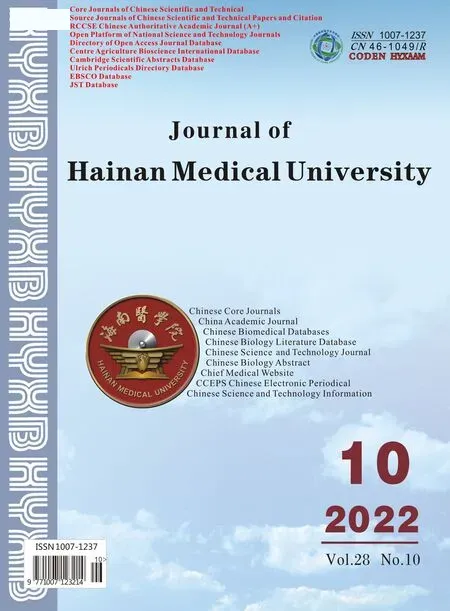Rule of prescribing traditional Chinese medicine in the treatment of pneumoconiosis basedon association rules and k-means clustering algorithm
Hao-Jie Yang, Zhi-Song Wu, Fang Cao, Yao-Dong Cai, Jie Xie, Yang Jiao✉
1. Beijing University of Chinese Medicine, Beijing 100029, China
2. Dongfang Hospital Affiliated to Beijing University of ChineseMedicine, Beijing 100078, China
ARTICLE INFO
Article history:Received 1 May 2022 Received in revised form 10 May 2022 Accepted 14 May 2022 Available online 27 May 2022
Keywords:Pneumoconiosis Traditional Chinese Medicine inheritance computing platform Medication rule K-meansclustering Association rules
ABSTRACT Objective: To analyze the rule of prescribing traditional Chinese medicine for treating pneumoconiosis, so as to provide reference for differential diagnosis and treatment of pneumoconiosis as well as for the development of new drugs for treatingthe disease.Methods: We searched China National Knowledge Infrastructure, Wanfang Database and VIP Chinese PublicationDatabase to retrieve relevant literatures which were then screened according to the enrollment criteria to establish a prescriptiondatabase of traditional Chinese medicine for the treatment of pneumoconiosis. The inheritance calculation platform of traditionalChinese medicine was used to analyze the prescribing rule of traditional Chinese medicine in the treatment of pneumoconiosisbased on association rules, k-means clustering algorithm and regression model analysis. Results: A total of 131 related literature were preliminarily selected, from which 97 prescriptions of traditional Chinese medicine with a total of 195 herbs were included.The most frequently prescribed herbs included Radix astragali,Platycodon grandiflorum, Pinellia ternata, licorice, Codonopsispilosula, Salvia miltiorrhiza,bitter almond etc. A total of 14 association rules, 13 high-frequency herb pairs were found and 5groups of formulas were revealed by cluster analysis. Conclusion: The prescriptions for the treatment of pneumoconiosis are mainly composed of herbs for tonifying deficiency,resolving phlegm, relieving cough and asthma, activating blood circulation and removingblood stasis, which are supplemented with herbs for clearing heat, relieving appearance, regulating qi, promoting waterand permeating dampness, etc. , The prescribing rules reflect the basic pathological characteristics of lung deficiency and collateral arthralgia in pneumoconiosis,which provides some ideas for the clinical differentiation and treatment of pneumoconiosis in traditionalChinese medicine. It also provides reference for the research and development of new treatment methods.
 Journal of Hainan Medical College2022年10期
Journal of Hainan Medical College2022年10期
- Journal of Hainan Medical College的其它文章
- Study on the medication rules of traditional Chinese medicine in the treatment of sleep disorder after stroke based on data mining
- Intervention effect and mechanism of Jisheng Shenqi Decoction plus Panax notoginseng and Bionjia on CCl4-induced hepatic fibrosis rat model
- Effects of acupuncture combined with Kaijingtongmai Decoction on ATP sensitive potassium channel related proteins Kir6.1 and Kir6.2 in myocardial infarction rats
- Exploring the molecular biological mechanism of Shugan Jianpi Decoction in the treatment of depression-related breast cancer based on network pharmacology
- Clinical effect of enriching qi, activating blood circulation, clearing away dampness and heat combined with western medicine in the treatment of idiopathic membranous nephropathy: A meta-analysis
- Effects of LPS-induced cholangitis on the cytoskeleton morphology of bile duct epithelium and the intervention mechanism of Dahuang Lingxian formula for these changes
